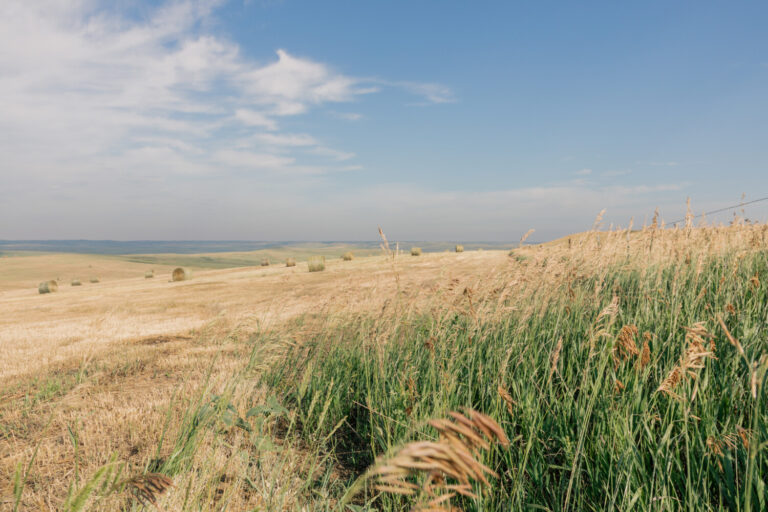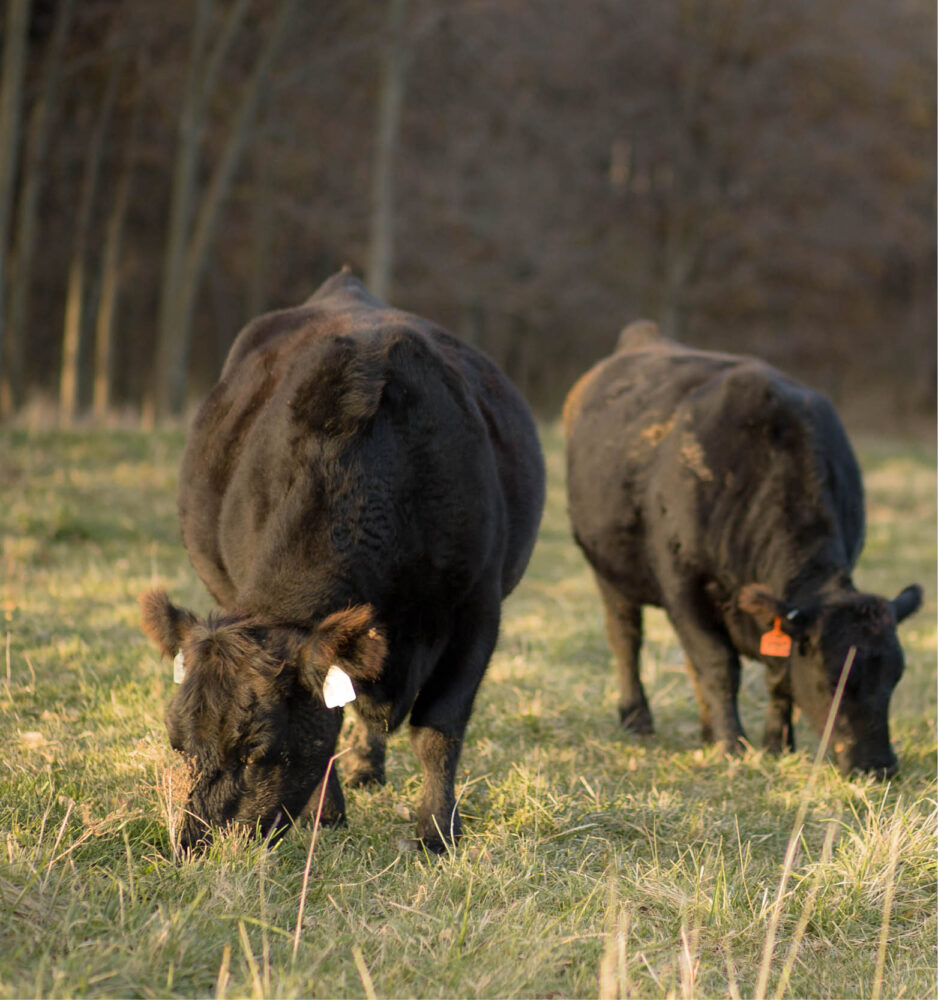
Agricultural Diversification Paves Way For Profitability and Sustainability
April 2024
Being the first farmer in your area to attempt a new production practice is intimidating. However, agricultural innovation is built on the brave actions of those willing to push the boundaries of tradition. For beef and hay producers, agricultural diversification efforts can make all the difference in mitigating risk and finding profit in emerging markets.
Dr. Kirsten Nickles, a sustainability and animal care scientist at Certified Angus Beef, said farm diversification should be on the radar for producers.
“Diversification is more important than ever,” she said. “When you look at inflationary pressures or the labor challenges producers are facing, we know that now is the time to be thinking of maximizing current or adding additional revenue streams.”
The Ohio State University graduate and cattle producer said diversification benefits producers in three ways: profitability, sustainability and consumer trust.
How agricultural diversification can lead to profitability
Exploring alternative revenue streams and optimizing resources can help producers mitigate risks, and help positively affect their bottom lines. Nickles said intentionality in thinking about goals can help producers put their best foot forward. However, she cautions them to wait to diversify until profitability has already been maximized with current management tactics.
“Regardless of the specifics of your operation, you can be thinking about goals. How can you help your cows be the best they can be? How do you improve your soil? Following through on these questions will enhance your profitability without adding more irons to the fire,” said Nickles.
Intentional management allows a variety of factors — for instance forage utilization, genetic advancements or weaning weights on a cattle operation — to work together and maximize long-term outcomes. It also helps set producers up for success when incorporating new revenue streams. Keeping a close watch on current performance makes it much easier to measure the success of diversification opportunities like adding a new species or different crop variety. Starting with a whole-farm picture is important to ensure success.
Nickles said many producers have been leveraging diversification for generations. According to her, they’re the ones who constantly have ideas flowing and know when to lean on resources such as extension agents.
“Begin the conversation of diversification with those who’ve already done it,” encouraged Nickles. “They’ll tell you what works and what doesn’t with your region in mind.”
Some agricultural diversification opportunities to consider include:
- Baling hay, corn stalks or straw.
- Selling or keeping replacement heifers.
- Custom baling or custom harvesting for other farmers or ranchers.
- Implementing artificial insemination for genetic advancements.
- Incorporating cover crops.
- Selling beef locally to a community or freezer beef sales.
- Adding additional species or cattle breeds with qualities focused on herd improvement.
Enhancing sustainability through agricultural diversification
While profitability and diversification can go hand in hand, enhanced environmental sustainability is an additional benefit of agricultural diversification. Innovative management practices often lend themselves to greater environmental stewardship.
“I think there’s a perception out there that producers are skeptical of sustainability-focused management practices due to folks saying they want to do things how they’ve always done them,” said Nickles. “I don’t think the majority of producers have that mentality. For the most part, we know producers want to constantly improve their operations to do what’s best for their land, their livestock and their families.”
Sustainability and trending topics like regenerative agriculture can often be seen as buzzwords that resonate with consumers. And consumer-driven messaging can often put producers on the defense — especially if messages seem to be telling them how to operate their farms or ranches.
The Certified Angus Beef (CAB) team and Dr. Nickles have these consumer-focused conversations daily.
“I know it can feel like you’re being told how to raise your livestock or how to manage your land, but I want producers to know that’s not the case,” said Nickles. “We often tell consumers that your farm or ranch wouldn’t still be around today if you weren’t doing a good job already and people are often receptive to that.”
But Nickles said there’s certainly room for improvement in how producers are documenting their efforts.

“We need to do a better job of giving producers credit for their efforts or when they make production decisions that change something that hasn’t been changed in decades,” said Nickles. “When we reframe the sustainability conversation that way, it can encourage more innovation versus the anxiety that comes with being told how to do your job.”
Sustainability-focused management practices and tips to consider include:
- Working with conservation groups such as Ducks Unlimited or a government agency like Natural Resources Conservation Service (NCRS) to explore what options are available for cost-share opportunities.
- Developing a grazing management plan.
- Creating manure storage, especially if spreading manure could be beneficial for fields.
- Adding water or fencing infrastructure to allow herds to graze more efficiently.
- Planting cover crops for both soil health and shoulder-season grazing opportunities.
- Becoming Beef Quality Assurance (BQA) certified.
Maximizing consumer trust and market demand through agricultural diversification
The sustainability conversation naturally lends itself to gaining consumer trust; a key aspect of maximizing domestic demand. However, evolving consumer preferences can make trust-based conversations more difficult.
“Documenting your practices isn’t just for the sustainability conversation. It’s for the overall consumer trust aspect of growing market demand,” said Nickles. “You can’t have the farm diversification conversations without the demand conversation.”
Ensuring demand for the products beef and hay producers are selling ensures a thriving industry, even when external factors such as drought negatively impact profit opportunities. Growing demand drives profitability that can mitigate risk in challenging years.
According to Nickles, one of the easiest ways a beef producer can maximize consumer trust, grow demand and easily diversify their operation is to get Beef Quality Assurance (BQA) certified.
“It’s free, the training is easy and you only have to do it once every three years,” said Nickles. “And we know BQA-certified producers are the ones who invest the most in their cattle, their operations and their employees.”
This article contains third-party observations, advice or experiences that do not necessarily reflect the opinions of Vermeer Corporation, its affiliates or its dealers. Individual results may vary based on care and operation of machine and crop and field conditions, which may adversely affect performance.
Vermeer Corporation reserves the right to make changes in engineering, design and specifications; add improvements; or discontinue manufacturing at any time without notice or obligation.
Equipment shown is for illustrative purposes only and may display optional accessories or components specific to their global region. Please contact your local Vermeer dealer for more information on machine specifications. Vermeer and the Vermeer logo are trademarks of Vermeer Manufacturing Company in the U.S. and/or other countries.
© 2024 Vermeer Corporation. All Rights Reserved.

